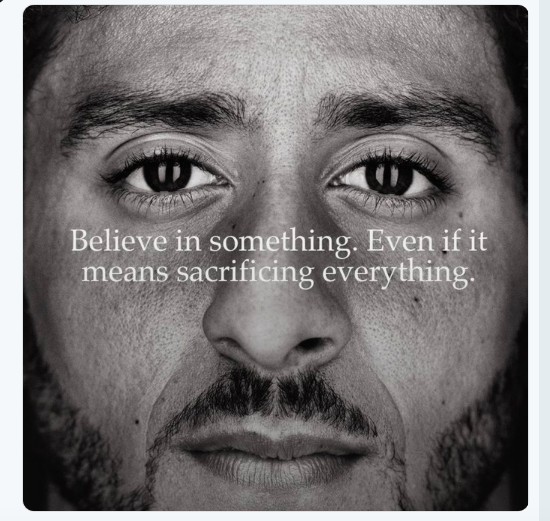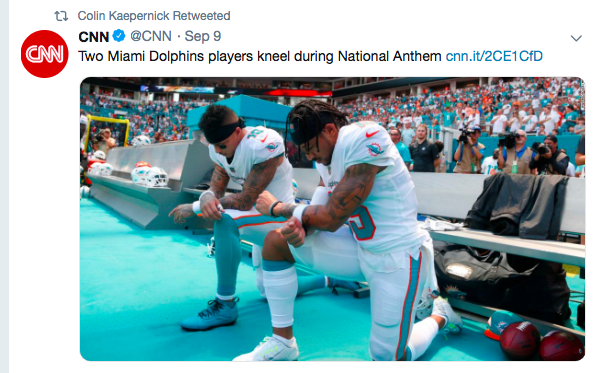Brand You Reflection
Organizational identity is how an organization define who they are, including the employer and employee perception and even the customer perception as well. The organization identity can also be determined by the organization brands itself as well. A brand “is a bundle of values and attributes that define the value you deliver to people through the entire customer experience, and the unique way of doing business that forms the basis of your company’s relationship with all of its stakeholders” (Yohn, 2014). The values and attributes of an organization is very important and depending on those values is how many will look at the organization as a whole and can even determine their success.
The revelations that I have experienced from this course is that in order to be happy with the organization or company you work for, the values of that organization must match your own values. As an employee or employer, you will represent the organization inside and outside of the office and it only make sense that those values match. I know my identity is influenced by my organization identities and brand by their core values. Their core values are integrity, respect, teamwork, innovation and courage and those are some ways I identify myself. “The activity around shared experiences influences others” (Solis, 2013 p. 40). I feel as if I have a healthy level of organizational identification as I am aware of how I identify and how I am identified within my organization. I personally do not feel as though my organization encroaches on my personal identity as I am a believer of having a separate personal identity and professional identity to a certain extent.
I feel that a personal identity and professional identity is important because this is what makes everyone different and unique. This is what make some organizations stick out and be different. If we all only had a professional identity, the organization would not have any culture or diversity, and everyone would be the same. This is why I believe that having a personal identity assorted in with a professional identity is vital the success of any organization. Also, this is how one may be able to construct and maintain a coherent, marketable personal identity, by being themselves and knowing there is a time and place for everything. Having and maintaining a personal identity can be difficult, and like Weller mentioned, “Today’s workers face new, unexplored challenges while attempting to transform and maintain positive, coherent personal identities” (Weller, 2001) but it can be done.
I feel that the new social contract is the more dominant organization in my life. With the old social contract, there was not any room for growth for employees and the employer/ employee’s relationship was almost nonexistence. To where with the new social contract, between the employers and employees, overall the relationship is very existence and much better. For the employers, they can be more at ease that the employees will start with their company and work harder for growth within. The employees will receive better pay for the work they contribution, better benefits and even the opportunity to learn more to advance within the company. Both the employer and employee vision has changed to where their main goal is to “focus on customer needs and desires” (Singh, 2009) and to gain personal and professional development. If the employee and employer have no relationship, how can they work together as a team. I believe that teamwork is how most organization become successful and why the new social contact is more dominant over the old social contract.
In my opinion, the notion of career has changed within the last ten years by careers being taken more seriously. Ten years ago, I would compare a career to a job—just something to get by and to pay the bills. A job to where one would make a switch very often, maybe year after year or even month to month. Also, a job being very easy to find and even easier to find a replacement job. A career today is taken very seriously. A career is not as easily found like jobs and a career is something that will provide longevity. With a career today, this is where you will spend lots of time and have a plan to hopefully grow within that same organization for years.
Some of the biggest identity challenges as a worker today is fitting in. Especially when someone is the new person in the office and now quite sure how to fit in with the crowd. For me, my nerves at times get the best of me and I am very shy. I normal would not say much and just sit back and simply observe. I feel that by sitting back and observing, I get to see the flow and how the office operates. After observing for a few days, I then start to warm and get a little comfortable within the organization. I then start to find my place and see how I want to fit in. Once I feel as if I am a part of the team, I then will start to show who I am and my personal identity. “People are going to talk, so give them something to talk about” (Solis, 2013) and I mean that in the most positive way.
The strategies that I used to maintain a self-satisfying, coherent identity as a worker in today’s economy is to always be myself. Being myself at work is very satisfying as I do not have to pretend to be anyone else. Being yourself allows you to be able to be identity like no one else in the office. Another strategy I use to maintain a self-satisfying, coherent identity as a worker in today’s economy is to have a good balance between my personal and work life. Being able to balance a personal life and work life and do them both well can be challenging but will lead to a satisfying coherent identity. The main key to maintain a self-satisfying, coherent identity in my opinion is to understand the importance of the work- life balance.
Professional Identity Plan
Interests & Passions
A personal interest and passion of mine is helping other, especially the youth. I enjoy mentoring younger girls who may not have anyone else to look up to or needs someone they can feel comfortable talking with. I fulfill this passion by volunteering my times with different youth clubs and I even coach a cheerleading team. My professional interest and passion are assisting other with work knowledge they may not know or understand. Also making sure the professional work experiences is fun while keep with morale up. My personal and professional interest and passion intersect by me ultimately wanting to help others. To lead and guide them all in the right direction. My overall ideal professional identity is to be someone others can depend and rely on for guidance, ideas, leadership and knowledge. I want to be an example of showing my beliefs and values of integrity, teamwork and courage as a HR leader.
Strengths & Valuable Resources
My strengths and valuable resources are the qualities I possess. I am very organized, I have great communication skills, I am dedicated to my organization, and I am a growing and evolving leader. I know I consider these to be my strengths, but I know there will always be room for personal growth. I can leverage these skills to stay marketable in this economy and craft and communicate a coherent professional identity by remaining open minded and by remembering there is always room to grow and to learn from others. I believe no one is perfect and I am always open to new ideas, new processes and change. A great leader is said to be honest, a good communicator, and to be committed to their organization.
Skills & Experiences Needed
The skill I need to construct my ideal professional identity is become better with innovations. I want to be identified as someone that can come up with new ways to correct certain methods that are broken and be quick on my feet with it. I am not a believer of the saying “if it’s not broke, don’t fix it”. I am a believer that there are always new ways to make an organization better and more efficient. My plan for obtaining this skill is to always think outside of the box, as innovators think differently. I also plan on attending seminars and even networking events to become better at this skill.
Professional Identity Communication Plan
I will craft a strong, coherent, public identity or brand by always remaining true to myself and my passion. No matter my circumstances, I plan to always remain humble as well. By staying humble and true to myself, I know for sure my professional identity will be exactly what I want it to be in a few years. The mediums and platforms I plan to use to help develop my identity and brand is to become more active on my LinkedIn account, go to more networking events and by even creating a professional twitter and Instagram accounts. One message that I want to be a part of my public identity or brand is “Teamwork makes the dream work”.
References
Singh, A. K. (2009). Changing social contract between employer and employee.
Solis, B. (2013). What’s the future of business: Changing the way businesses create experiences. Hoboken, NJ: Wiley.
Weller, K. (2001). Don’t Sweat the Small Stuff: Employee Identity in the New Economy.
Yohn, D. L. (2014). What great brands do: The seven brand-building principles that separate the best from the rest. San Francisco: Jossey-Bass.


